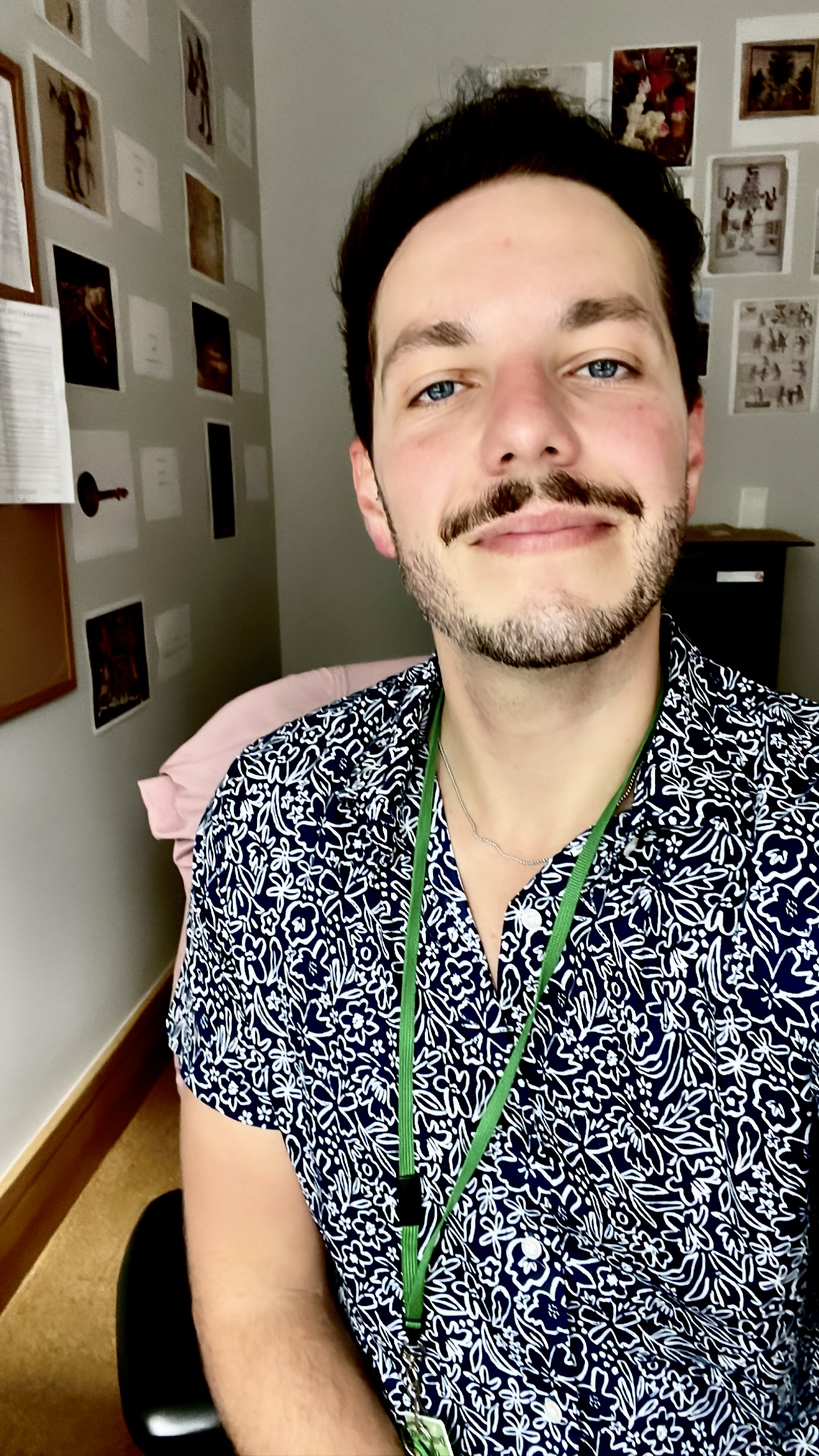Anthony Meyer
Anthony Meyer is an art historian who specializes in the Indigenous Americas, from its first occupations into the early modern period. He received his PhD in Art History from the University of California, Los Angeles, and his research explores the crossroads between Nahua art, language, and religion in the Mexica Empire (1325 – 1521 C.E.) and the transatlantic world of colonial New Spain. His current book project, The Givers of Things: Religious Leaders and Sacred Making in the Nahua World, examines how religious leaders known as tlamacazqueh, or “the givers of things,” used artistic skill and knowledge to make and animate sacred works both before and after Iberian invasion. For his research, he has received support from the Center for Advanced Study in the Visual Arts, Dumbarton Oaks, the Fulbright Association, the Huntington Library, the John Carter Brown Library, the Renaissance Society of America, the Society for Architectural Historians, and the Social Science Research Council.
During his research fellowship at the University of Glasgow Library, Meyer will investigate the structural changes that Nahua religious leaders and their practices faced after Iberian invasion as recorded in the Historia de Tlaxcala, a sixteenth-century manuscript compiled by Franciscan friar Diego Muñoz Camargo in New Spain. In several of its 156 drawings, friars working in the Indigenous community of Tlaxcala are depicted erasing and destroying the sacred art and architecture that animated Mexica state religion. Within these scenes, Nahua nobles are shown to assist them, sometimes holding torches that set flame to fig-bark costumes and stone temples, and other times executing Nahua religious leaders themselves. By studying these drawings closely alongside the written texts that detail these practices, Meyer will better understand the strict measures taken toward Nahuas in New Spain and how friars targeted the rich material and visual culture that Nahua religious leaders made and used. In these drawings, too, Nahua figures are often shown with turned heads and pained demeanors, and his research on the manuscript will catalog and interpret these instances as moments of Indigenous resistance and reflection, especially since the drawings were likely done by a Nahua artist working in Tlaxcala. Because this manuscript was eventually presented to King Philip II in Spain, Meyer will also piece together its reception history to understand how Europeans across the Atlantic responded to the manuscript and Nahua religion more broadly.
I am delighted to be able to conduct research at the University of Glasgow Library, which will give me crucial time to study a manuscript that sits at the heart of my book project. The Historia Tlaxcala—or MS Hunter 242 as its known at the Library—is a rich textual and visual archive of Nahua religion and its material culture. With its newly conserved state, I will have the rare opportunity to work with the Historia in person, which has been largely unavailable to researchers. By studying its drawings, texts, and reception history, I will better understand the colonial changes that Nahua religious leaders and their practices faced, the many moments of Indigenous agency and resistance that rise within its pages, as well as how these topics were viewed and discussed across the Atlantic.


